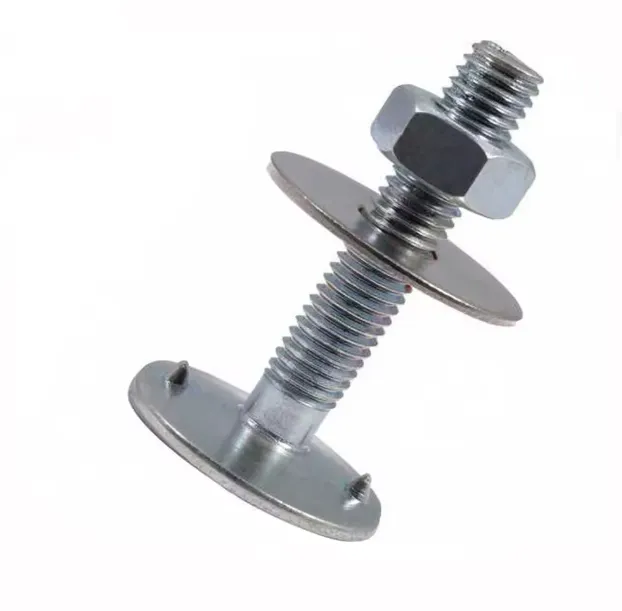

Optimal Roof Brackets for Solar Panel Installation and Efficient Energy Harnessing
Nov . 08, 2024 02:20 Back to list
Optimal Roof Brackets for Solar Panel Installation and Efficient Energy Harnessing
Understanding Solar Panel Roof Brackets A Comprehensive Guide
As the world shifts towards renewable energy sources, solar panels have emerged as a prominent solution for both residential and commercial energy needs. Solar panel installation requires a robust structure to secure the panels effectively, and this is where solar panel roof brackets come into play. In this article, we will explore the significance of these brackets, their types, installation processes, and key considerations for homeowners and businesses alike.
What are Solar Panel Roof Brackets?
Solar panel roof brackets are hardware components that secure solar panels to a rooftop or other surfaces. These brackets ensure that the panels are positioned at the optimal angle to capture sunlight efficiently and withstand various weather conditions. A properly installed bracket system not only holds the panels in place but also protects the roof from potential leaks and damage.
Types of Solar Panel Roof Brackets
There are several types of solar panel brackets designed for different types of roofs and installation requirements
1. Flush Mount Brackets These brackets are used for flat roofs and low-slope installations. They mount the solar panels directly to the roof surface, minimizing wind resistance and enhancing aesthetics.
2. Tilt Mount Brackets Tilt mount systems allow the solar panels to be angled for better solar exposure. These are beneficial for rooftops with obstructive elements such as chimneys or trees.
3. Ballasted Mounts Commonly used for flat rooftops, ballasted mounts do not require penetration into the roof surface. Instead, they utilize weights to hold the panels in place, making them ideal for temporary installations or locations where roof damage is a concern.
4. Ground Mount Brackets For properties without suitable rooftops, ground mounts provide an alternative. These brackets allow solar panels to be fixed on the ground, optimized for sunlight exposure and accessibility for maintenance.
Installation Process
solar panel roof brackets

Installing solar panel roof brackets involves several critical steps
1. Planning and Measurement Before installation, it's crucial to assess the roof's condition, orientation, and angle to determine the optimal placement and type of brackets to use.
2. Choosing the Right Bracket System Based on the roof type and solar panel specifications, selecting the appropriate bracket is vital. Always consult with a professional to ensure compatibility and safety.
3. Securing the Brackets Properly anchoring the brackets to the roof is crucial to prevent water leaks. This often involves drilling pilot holes and using sealants to seal around screws and bolts.
4. Mounting the Panels Once the brackets are securely in place, solar panels can be attached. This step typically requires balancing the panels and ensuring they are level for efficiency.
5. Final Inspection After installation, a thorough inspection checks for any potential issues such as loose fittings or improper sealing, ensuring a secure and functional solar panel system.
Key Considerations
There are several factors to keep in mind when selecting and installing solar panel roof brackets
- Roof Structure The integrity of the roof must be evaluated. Roofs with significant wear or damage may require repairs before installation. - Local Building Codes Always check with local regulations and codes to ensure compliance and safety during installation. - Professional Assistance Hiring a licensed installer is often recommended. Their expertise helps ensure that the system is installed correctly and meets safety standards.
Conclusion
Solar panel roof brackets play an essential role in securing solar panels and optimizing their performance. By understanding the various types and installation procedures, homeowners and businesses can effectively embrace solar energy while ensuring a robust and safe mounting system. As solar technology continues to evolve, staying informed about the best practices in installation will contribute significantly to the sustainability and efficiency of solar energy systems.
Latest news
-
Hot Dip Galvanized Bolts-Hebei Longze|Corrosion Resistance&High Strength
NewsJul.30,2025
-
High-Strength Hot-Dip Galvanized Bolts-Hebei Longze|Corrosion Resistance&High Strength
NewsJul.30,2025
-
Hot Dip Galvanized Bolts-Hebei Longze|Corrosion Resistance&High Strength
NewsJul.30,2025
-
Hot Dip Galvanized Bolts - Hebei Longze | Corrosion Resistance, High Strength
NewsJul.30,2025
-
High-Strength Hot Dip Galvanized Bolts-Hebei Longze|Corrosion Resistance, Grade 8.8
NewsJul.30,2025
-
Hot Dip Galvanized Bolts-Hebei Longze|Corrosion Resistance,High Strength
NewsJul.29,2025

